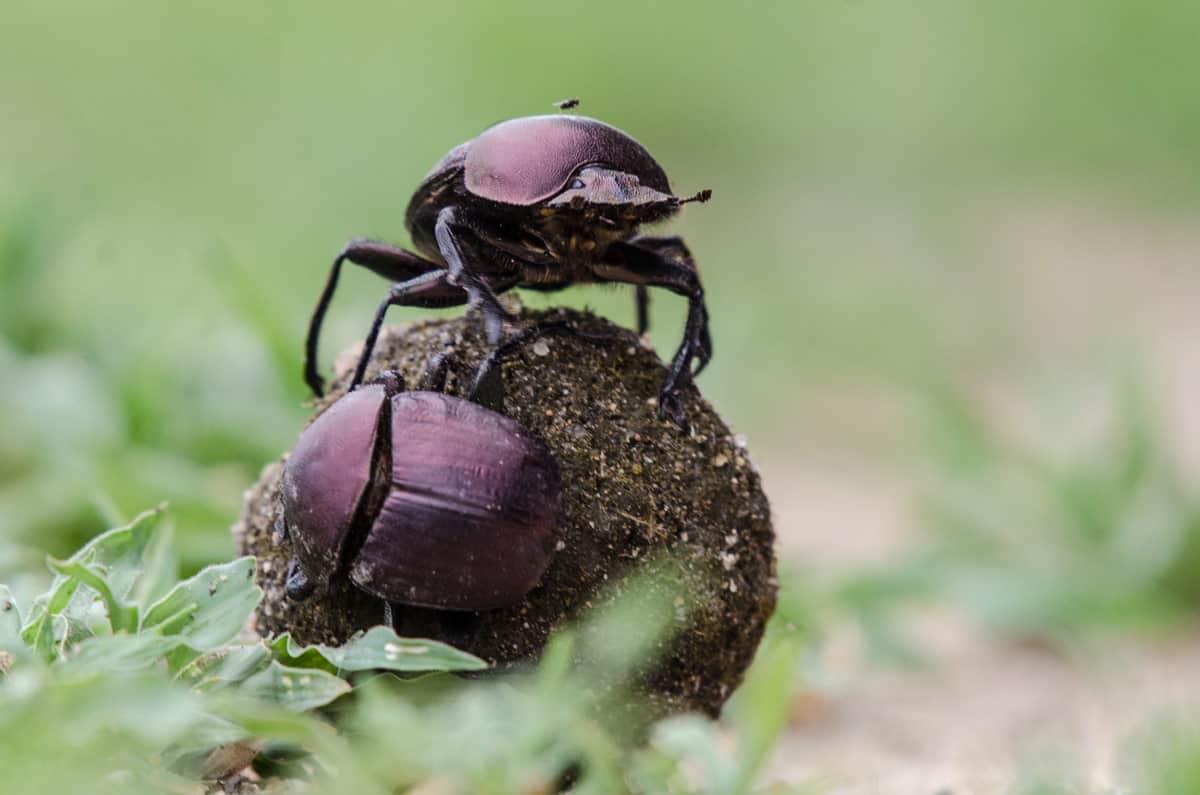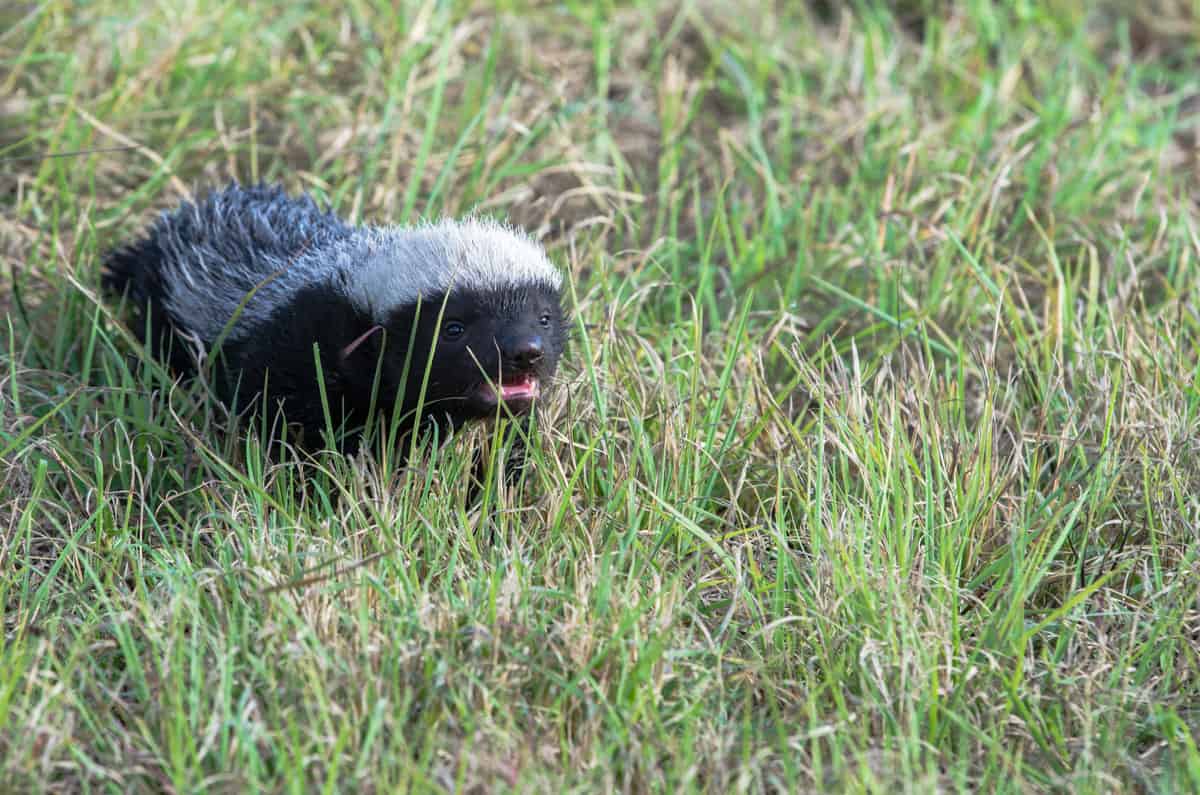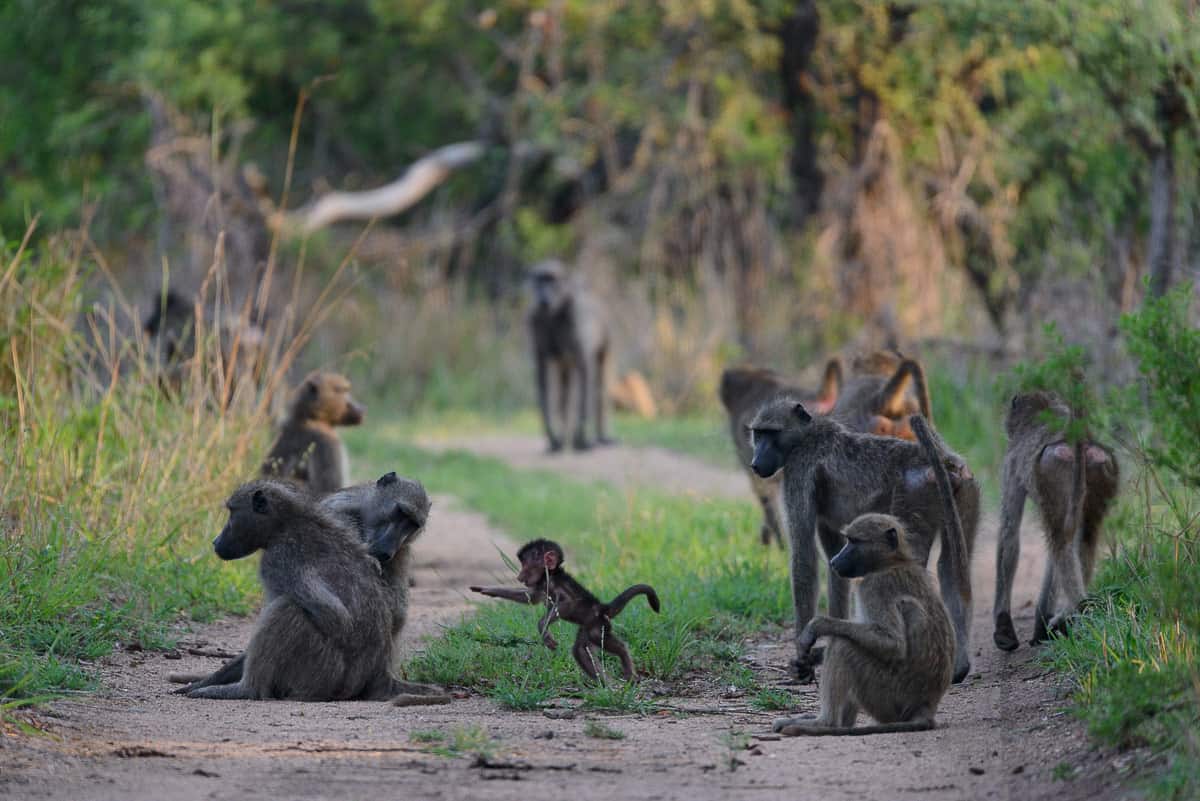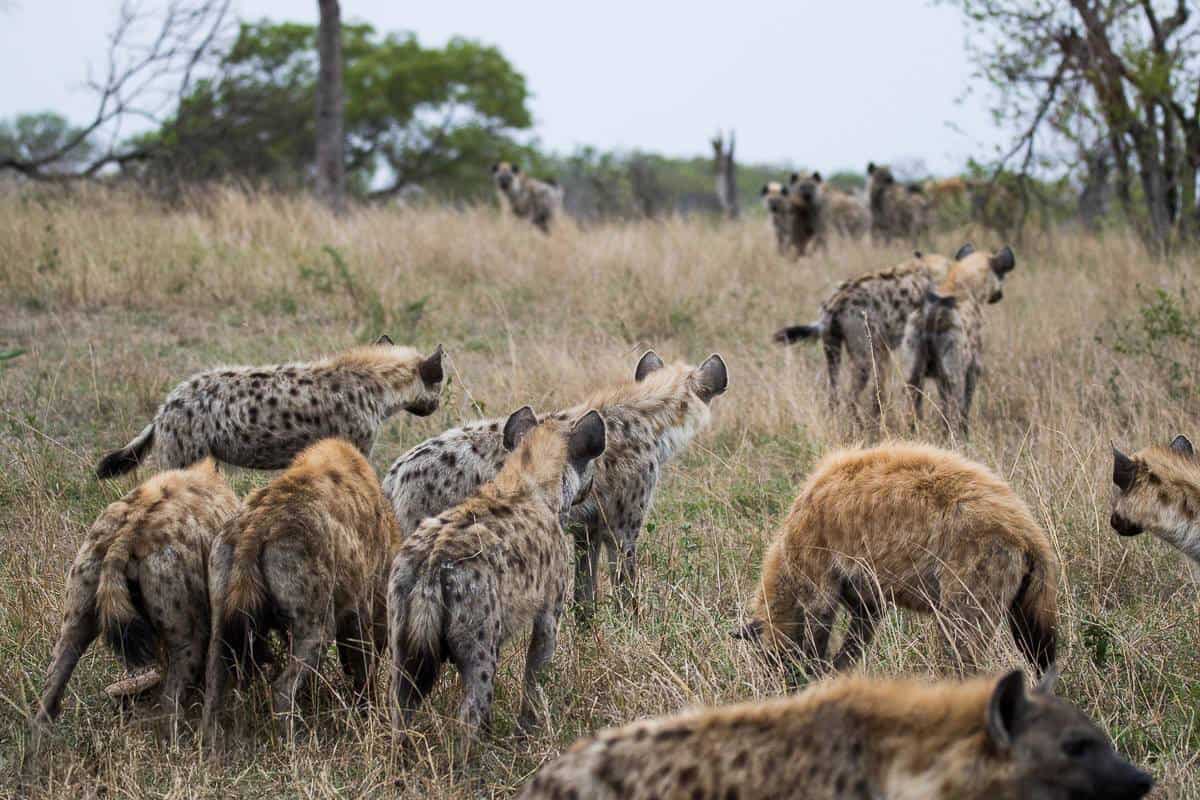Bushveld Mobsters
on Sep 27, 2018Real-life gangs of the bush are every bit as strategic, calculating and ruthless as their human counterparts. Bushveld thugs combine for a specific purpose to either expand territory, steal food or overthrow social structures, operating under dubious means in the brutal animal kingdom.
DELINQUENT DECOMPOSERS

As the strongest insect on earth, the dung beetle is able to pull 1000 times its own body weight, equivalent to a person dragging six fully-loaded double decker buses. It is also the only known animal to orient itself using polarised moonlight and the Milky Way as a compass to find its way home at night. During a single night time outing, a dung beetle can bury dung 250 times heavier than itself. These robust insects are classified into four groups that either roll dung (telecoprids), buries dung (paracoprids), lazily dwell in dung (encdocoprids) or steal dung (kleptocoprids). The latter are clandestine Good Samaritans that appear to offer assistance to a struggling telecoprid to roll its dung over rocks and other obstacles in its path. However, as soon as the dung rolling beetle gets close enough to the robbers, they use brute force to overpower it and scurry off with the stolen goods.
BAD BADGERS

The reputation as the world’s most fearless animal belongs to the honey badger. Up to a quarter of the honey badger’s omnivorous diet consists of venomous snakes, and while hunting for this source of protein, the honey badger will often sustain a deadly snake bite. As the venom seeps through its body, the honey badger slips into a coma for a couple of hours, only to awake and finish off the snake. The ferocious defense abilities of a honey badger, or ratel as they are also known, are witnessed when standing its ground against lion, hyena, wild dog and leopard. Skin as thick as armour (6 millimetres) is loosely connected to muscle, making it nearly impossible for a predator to get a grip on a honey badger as it escapes in a Houdini like act, turning itself around and counter-attacking the predator in whose jaws it has been trapped. Honey badgers derived their names from their love of bee honey and will sustain an onslaught from a swarm of bees, unaffected by their stings, as it feasts on its favourite snack. Uncannily intelligent and one of only a few species known to be capable of using tools to hunt, the honey badger eats every part of its prey, including the bones.
BABOON GOON

Chacma baboons can live up to 45 years in troops that vary between a few dozen to a few hundred. The Al Capones of the primate world thrive in a complex and unstable hierarchy, led by a dominant, aggressive male who is supported by less dominant, but mutually aggressive henchmen. These low-ranking males occasionally form coalitions with other partners to gang up against the dominant male, toppling the hierarchy and establishing a new social order, often committing infanticide in order to mate within its harem of females.
HOODLUM HYENAS

The shrill cackle of a clan of hyena as they move in unison at full speed, leaves even the king of beasts cowering. Lions are naturally bigger and more powerful, but hyenas won’t shy away from an attack or stealing their food when the odds are in their favour. A coordinated onslaught, led by dominant female hyenas, is initiated by recruiting other members through loud and incessant vocalisations. Once numerous hyenas are present, a coalitionary attack ensues, overwhelming lions and driving them away from a recent kill, leaving the attackers to feast.
So the next time you are on safari, and our Sabi Sabi rangers and Shangaan trackers come across these species, know that these are some of the real mobsters that reign in the wild.






